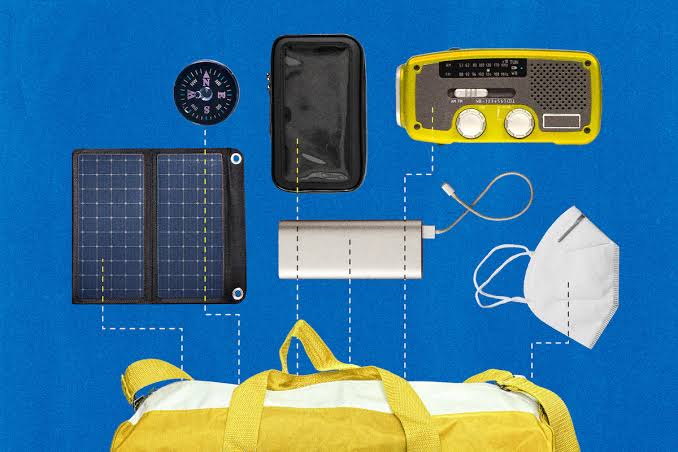Biometric authentication is now a key part of modern device security, replacing passwords and PINs with easier and safer options. People use fingerprints to unlock phones and facial recognition to access laptops. Over the last ten years, biometric technology has grown quickly. By July 2025, it is a common feature in everyday electronics, work tools, and smart home devices.
With developments in artificial intelligence, sensor technology, and data encryption, the future of biometric authentication is poised to redefine how we interact with our devices. This article explores the evolving landscape of biometrics in gadgets, the innovations shaping its future, and the challenges that must be addressed for broader, safer adoption.
Expansion Beyond Traditional Biometrics
Traditionally, biometric authentication relied mainly on fingerprints and facial recognition. However, the future is steering toward more diversified and advanced forms of identification. Iris scanning, palm vein mapping, voice recognition, and behavioral biometrics such as typing patterns and gait analysis are gaining popularity across industries.
In July 2025, several smartphone manufacturers have begun incorporating multi-modal biometric systems that combine two or more authentication methods for enhanced security. For instance, Samsung and Apple have started integrating fingerprint, face, and voice recognition in a single device. These developments suggest a shift toward layered security systems where a combination of biometric identifiers provides a more robust verification process.
AI-Powered Precision and Personalization
One of the most transformative forces in biometric technology is artificial intelligence. AI now plays a central role in improving the accuracy, speed, and adaptability of biometric systems. Machine learning algorithms can now better account for changes in appearance, lighting conditions, and even biometric data over time.
AI is also enabling more personalized authentication experiences. Gadgets can learn from user habits and environmental cues to refine the identification process. For example, a wearable device might recognize the user not just by their heartbeat pattern but also by the time of day, walking pace, or even posture. In 2025, wearable tech companies like Garmin and Fitbit are exploring heartbeat recognition as a biometric measure, while laptops from Dell and HP now offer machine learning-enhanced face ID systems.
Integration in Smart Homes and IoT Devices
Biometric authentication is no longer confined to personal gadgets like phones and laptops. It’s increasingly being used to secure smart home devices and Internet of Things (IoT) ecosystems. Smart door locks, voice-controlled assistants, and surveillance systems are now leveraging biometric inputs for both access control and identity verification.
As of mid-2025, many smart homes feature doorbells with facial recognition, voice-controlled lights with voice ID, and biometric safes that can be opened with fingerprints or palm scans. The ability to assign biometric access to individual family members or guests adds a layer of customization and convenience that passwords cannot provide.
This integration also reduces reliance on shared passwords or keys, minimizing the risk of unauthorized access in connected environments.
Biometric Payment Systems and Financial Security
Biometric authentication has also begun revolutionizing digital payments. With growing concerns over data breaches and fraud, financial institutions and fintech platforms are increasingly adopting biometric ID to secure transactions. In 2025, contactless payments using face and fingerprint scans are becoming common, especially in markets such as Asia, Europe, and parts of Africa.
For instance, Nigeria’s financial ecosystem has adopted biometric ATM withdrawals and mobile payment authorizations using face or fingerprint recognition, driven by collaborations between fintechs and national identity databases. Major smartphone brands now support biometric-enabled mobile wallets that eliminate the need for card PINs or password logins.
Biometric cards that feature built-in fingerprint sensors are also being rolled out by several banks, combining traditional card functionality with cutting-edge security.
Privacy Concerns and Ethical Considerations
Despite the convenience and enhanced security offered by biometric systems, there are growing concerns about data privacy and ethical implications. Unlike passwords, biometric data cannot be changed once compromised. This raises the stakes for data storage and protection.
As of July 2025, global regulatory bodies are taking stronger stances on biometric data usage. The European Union’s updated GDPR directives now include stricter provisions for biometric information, while African countries such as Kenya and Nigeria are formulating national policies to regulate its collection and use.
Companies are being pushed to adopt decentralized storage models and edge-processing technologies where biometric data is stored and processed locally on the device rather than on centralized servers. Apple and Google, for instance, have shifted toward on-device processing to ensure that users’ biometric data never leaves their gadgets.
Advances in Sensor and Hardware Technology
The physical components used for biometric scanning have evolved significantly. Ultrasonic fingerprint scanners, previously limited to high-end devices, are now more affordable and widespread, offering better accuracy and resistance to spoofing compared to optical scanners. Similarly, 3D depth-sensing cameras for facial recognition are being miniaturized and improved, making them suitable for compact devices like earbuds, watches, and even styluses.
Emerging biometric sensors can now detect body heat, blood flow, and even subtle movements under the skin, offering an additional layer of liveness detection. These technologies reduce the risk of spoofing via photographs, recordings, or dummy fingerprints. As of 2025, companies like Qualcomm and Synaptics are leading the innovation race in biometric sensor development for both mobile and wearable devices.
Biometric Authentication in Wearables and AR Devices
The future of biometrics is also being shaped by the rise of wearable technology and augmented reality (AR). Smartwatches, fitness bands, and AR glasses are increasingly incorporating biometric systems for security and personalization.
By July 2025, biometric wearables are not only being used for unlocking phones or authenticating payments, but also for real-time health monitoring and digital identity verification. AR glasses with iris scanning and voice recognition allow for secure logins to virtual platforms, enhancing both user security and immersion.
Biometric data collected from wearables is also helping personalize digital interactions—tailoring content, interfaces, and user experiences in ways that go beyond conventional input methods.
Toward a Seamless and Contactless Future
The ultimate goal of biometric authentication is to create seamless, invisible, and highly secure user experiences. As biometric sensors become more compact and AI continues to evolve, the authentication process will likely become almost imperceptible to users.
We are moving toward a future where unlocking a device, approving a payment, or accessing digital content will require no conscious input at all. Your gadget will simply recognize you. This vision is becoming more realistic as biometric authentication becomes more deeply embedded in daily life, supported by faster processors, improved sensor technology, and more secure data frameworks.
Final Thoughts
Biometric authentication in gadgets is undergoing a transformative evolution, powered by advancements in AI, hardware, and integrated security systems. What once seemed like science fiction is now part of everyday life, and the pace of change shows no signs of slowing. While challenges such as data privacy, regulatory oversight, and ethical use remain critical, the potential for more secure, convenient, and personalized gadget experiences is undeniable.
As consumers, developers, and regulators continue to shape the path forward, one thing is clear: biometrics will play a central role in how we connect with and protect our digital lives in the years to come.



